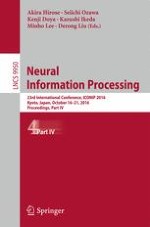2016 | OriginalPaper | Buchkapitel
Solving the Vanishing Information Problem with Repeated Potential Mutual Information Maximization
verfasst von : Ryotaro Kamimura
Erschienen in: Neural Information Processing
Aktivieren Sie unsere intelligente Suche, um passende Fachinhalte oder Patente zu finden.
Wählen Sie Textabschnitte aus um mit Künstlicher Intelligenz passenden Patente zu finden. powered by
Markieren Sie Textabschnitte, um KI-gestützt weitere passende Inhalte zu finden. powered by
